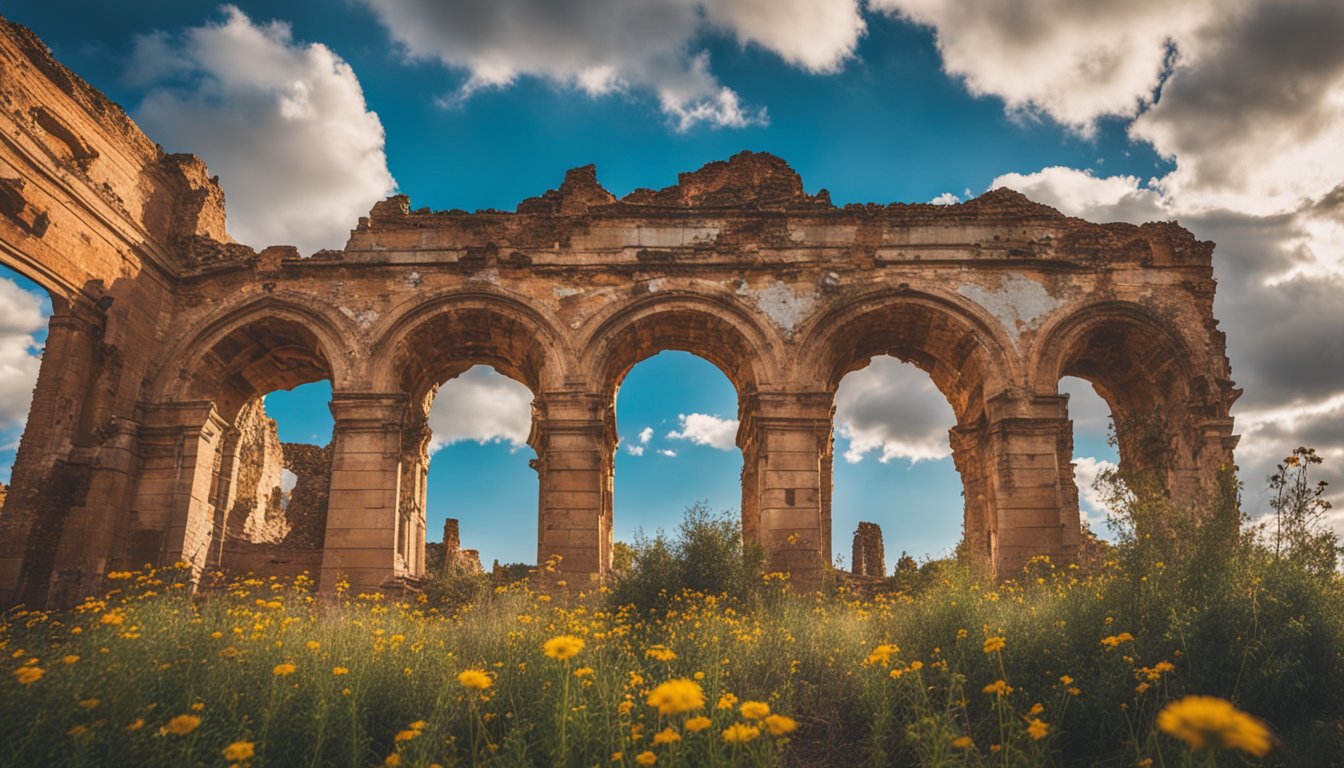Belchite, a town steeped in history located in Zaragoza, has captured the attention of the World Monuments Fund (WMF), which has designated it as one of 25 cultural sites worldwide needing immediate preservation efforts. Once vibrant with olive groves and fertile fields, Belchite housed around 4,500 residents in the 1930s. Its charming streets, lined with beautiful churches and synagogues showcasing Mudejar and Baroque architecture, painted a picture of a thriving community. However, the devastation wrought by the Spanish Civil War transformed this bustling town into a haunting ruin, claiming nearly 5,000 lives during brutal conflicts.
Preserving Historical Memories
Marta Beltrán, the director of the Belchite Tourist Office, shares insight into how the town’s unique terraced architecture shaped its defense. In 2024, around 38,000 visitors explored its poignant remnants. As part of the Fundación Pueblo Viejo de Belchite, Marta passionately believes that even in ruins lies the potential for hope. She emphasizes that, as Miguel de Unamuno suggested, these remnants embody resilience and the possibility of recovery.
The collaboration with WMF, an esteemed nonprofit organization founded in New York in 1965, plays a crucial role in propelling this vision forward. WMF has been dedicated to the preservation of cultural heritage, maintaining a biannual list of endangered sites and supporting over 700 initiatives across 112 nations, with around $300 million raised for conservation.
Historical Significance
Belchite’s spot on WMF’s latest watch list underscores an urgent reality: the town stands as a stark reminder of wartime atrocities and the peril of losing historical heritage. Designated a Site of Cultural Interest in 2002, it risks imminent collapse without proper protective measures implemented in the next two decades. Other sites highlighted for preservation efforts in 2025 include Gaza’s Historic Urban Fabric, Kyiv Teacher’s House in Ukraine, and Turkey’s Historic City of Antakya.
Pablo Longoria, the executive director of WMF Spain, noted that out of over 250 applications for preservation projects, Belchite was chosen for its urgent need. The next steps involve securing private funding for vital conservation work, including the development of a visitor center to improve accessibility to this historic site.
The urgent need for Belchite’s preservation was brought to light by local advocate Joan Sastre from Mallorca. Sastre’s commitment to promoting the town’s historical significance led him to create a compelling report detailing its ongoing decay.
A Window into the Past
Marta also sheds light on Belchite’s intricate history. In 1936, the town was under the leadership of a socialist mayor. The onset of the Civil War, sparked by Francisco Franco’s coup, saw Falangist forces invade the town, resulting in violence and the capture of the mayor, whose diary captures the strife of that era.
As Marta recounts, Belchite became a fortified enclave within Republican territory, where the conflict escalated into a prolonged siege. Its strategic importance attracted notable individuals, including Dolores Ibárruri and journalist Ernest Hemingway, who chronicled the harrowing battles. After an intense two-week struggle, survivors fled through the historic gates, cementing Belchite’s role as a symbol of the Republican cause.
Following the victory of Nationalist forces, Franco’s regime had plans to reconstruct Belchite, but instead, he ordered it to remain a monument to the horrors of war. A new town was built nearby, completed in 1954 and constructed with the labor of war prisoners. While new Belchite thrived, efforts have persisted to keep the old town’s legacy alive through guided tours and cultural initiatives, including film productions that highlight its haunting beauty.
In recent years, various restoration endeavors have aimed to stabilize the town’s ruins, with current efforts focusing on reinforcing the San Martín church. New cultural events, such as music and film festivals, have started to infuse life into the town, promoting a sense of community and celebration intertwined with its history.
The tour often concludes at the impressive—yet somber—San Martín de Tours church, where a plaque commemorating a traditional Aragonese song evokes the town’s emotional resonance. Ultimately, the spirit of Belchite embodies not just the weight of loss, but also a narrative of resilience, hope, and a sustained effort to honor the stories that shape our shared history.
Source: Elpais




